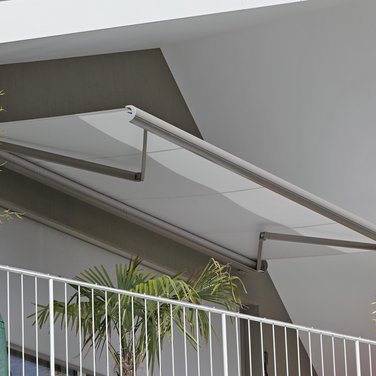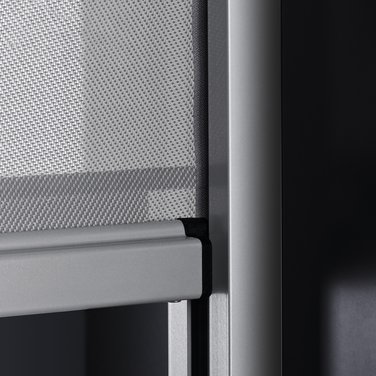From the yarn to the awning
Developing and manufacturing awning fabrics is highly complex. Olivier Ronner, CEO of Sattler Schweiz, gives an insight into the process in the following interview.
Mr Ronner, what requirements does an awning fabric have to fulfil?
Because awning fabric is specifically used outdoors, it has to fulfil some very high requirements. Innovative materials and manufacturing techniques produce modern awning fabrics that are really easy to clean and look great, too. And they have been much more than just a sun shade for quite some time now. For example, they provide reliable protection against harmful UV rays, do not discolour and are tear-resistant. In a nutshell, when we talk about awning fabrics nowadays, we are referring to high-tech textiles.
Assembling
Following the instructions on the order, our assemblers cut the fabric to length and trim it to the desired width. Then the sheets just have to be sewn together and fitted with keder rails. The valance must also be cut to size and sewn on. Finally, all the parts of the awning are carefully packaged up.
Quality is a top priority at Sattler. How do you ensure this?
By checking the quality several times along the entire the production process. The QA starts as soon as the yarn is delivered. It goes through various parameter checks once it arrives in the lab. The quality is also checked repeatedly during the weaving stage and one more time for defects before the woven greige fabric is treated. In addition to this, random spot checks are also carried out in the lab before the textile enters the final inspection where it is checked against the assessment catalogue and marked if it fails.
Why are the individual qualities priced differently?
Each product has different properties depending on the type of yarn used. For example, we use staple fibre yarn for our standard fabrics, but multifilament yarn for our Lumera fabrics with CBA (Clean Brilliant Acrylic). As a result, the Lumera fabrics offer outstanding brilliant colours and greater dirt repellency. We also make awning fabrics that are waterproof, flame retardant or even very reflective.
Are any of the fabrics a personal favourite of yours?
Yes, I actually have two favourites in our collection: One is the resilient “Dessin 320 678”; thanks to its retro design style, it is still going strong after every collection change, which is what makes it so special. And the other, which is almost the complete opposite, includes all the designs from Sattler’s Lumera-Landscape line as they can be used pretty much everywhere because of their monochrome and modern design style.













